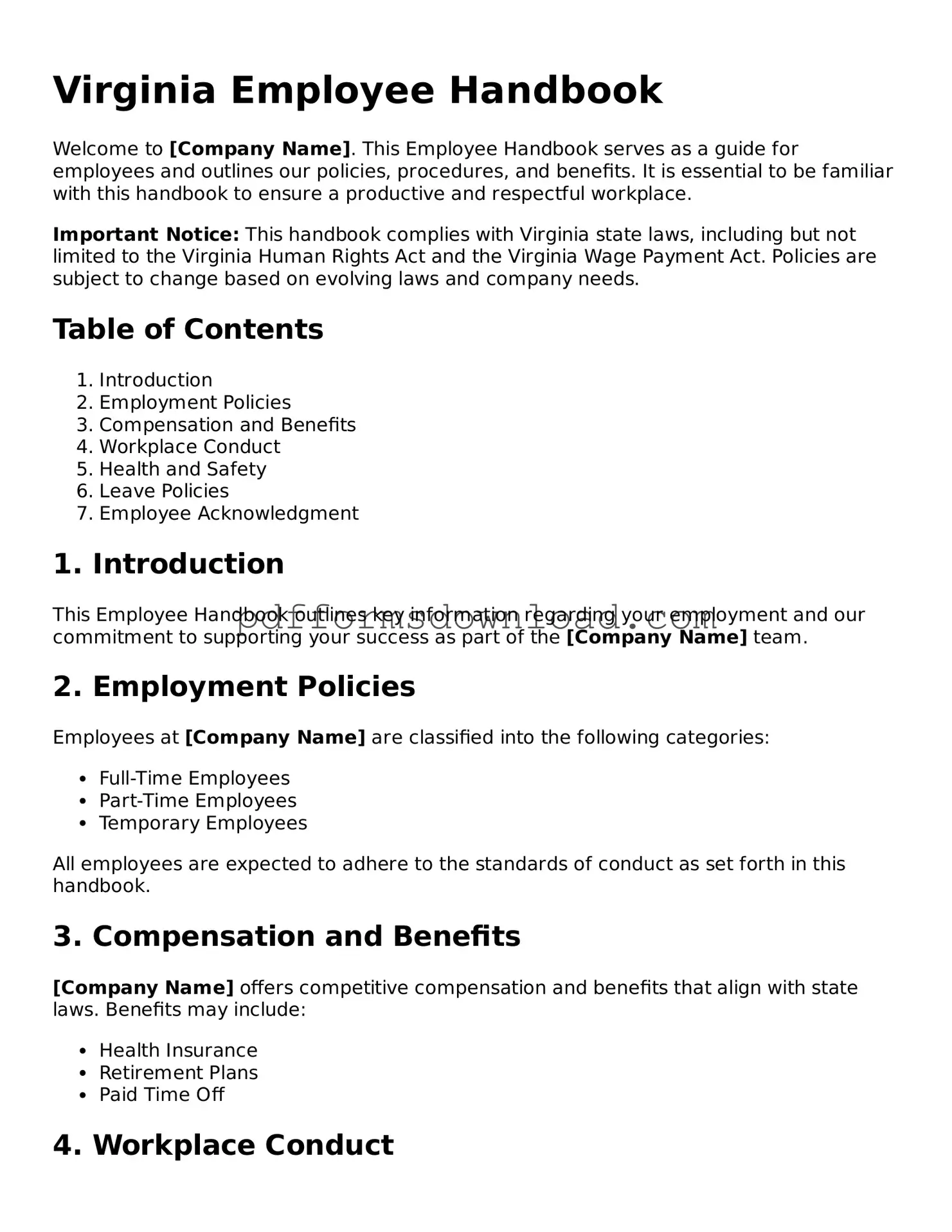What is the purpose of the Virginia Employee Handbook form?
The Virginia Employee Handbook form serves as a vital resource for both employers and employees. It outlines workplace policies, employee rights, and expectations. By providing clear guidelines, the handbook helps create a positive work environment and ensures compliance with state and federal laws.
Who needs to complete the Virginia Employee Handbook form?
All employers in Virginia should complete the Employee Handbook form. This includes businesses of all sizes, from small startups to large corporations. Employees should also receive a copy of the handbook to familiarize themselves with company policies and procedures.
What key topics should be included in the Employee Handbook?
Essential topics to cover in the Employee Handbook include workplace conduct, attendance policies, anti-discrimination policies, employee benefits, and safety procedures. It is also important to address disciplinary actions and grievance procedures to ensure clarity for all employees.
How often should the Employee Handbook be updated?
The Employee Handbook should be reviewed and updated regularly, at least once a year. Changes in laws, company policies, or workplace culture may necessitate updates. Keeping the handbook current ensures that employees are always informed of their rights and responsibilities.
What should I do if I have questions about the Employee Handbook?
If you have questions regarding the Employee Handbook, it is best to speak with your HR representative or manager. They can provide clarification on specific policies or procedures. If necessary, legal counsel can also offer guidance to ensure compliance with applicable laws.
